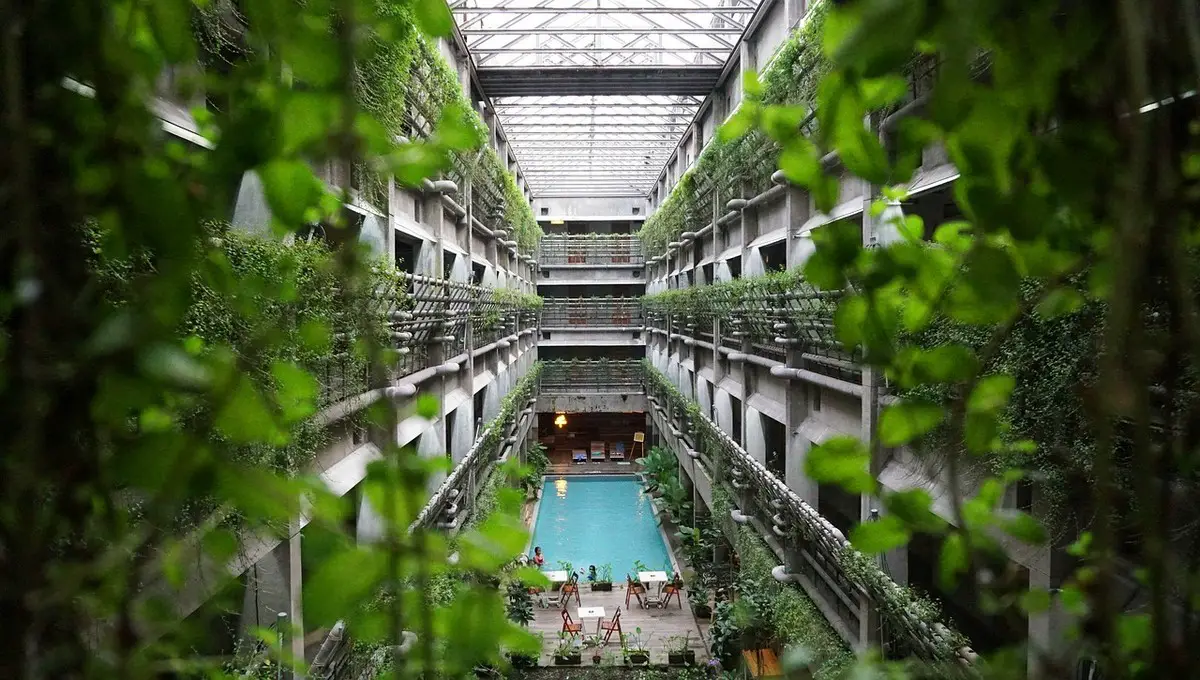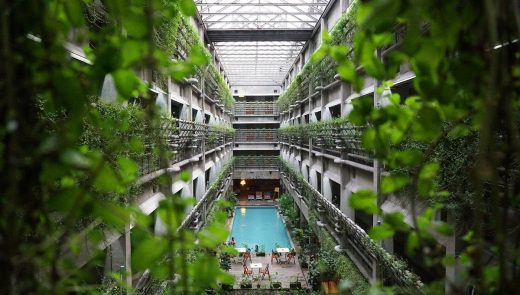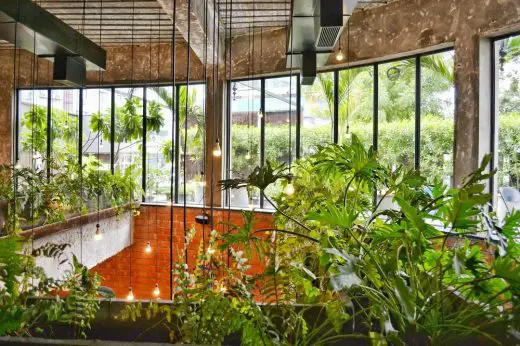Green innovations in urban architecture, Sustainable buildings, Climate change property design impact
Green Innovations in Urban Architecture
As someone who has always been passionate about architecture and sustainability, I am thrilled to see how green innovations are transforming urban landscapes. The integration of eco-friendly practices in city planning and building design is not just a trend; it’s a necessary evolution. Today, I want to share some exciting advancements in urban architecture that are making our cities more sustainable and livable.
The Rise of Green Architecture
The concept of green architecture is all about creating buildings that are environmentally responsible and resource-efficient. This starts from the planning and design phase and continues through construction, maintenance, and even renovation. It’s a holistic approach that considers the entire lifecycle of a building.
One of the key aspects of green architecture is Interior Design that prioritizes natural light, ventilation, and the use of sustainable materials. By carefully selecting materials that are non-toxic and recyclable, we can significantly reduce the environmental impact of our buildings.
Innovative Building Materials
Speaking of materials, one of the most exciting developments in green architecture is the use of innovative, sustainable materials. For instance, cross-laminated timber (CLT) is becoming increasingly popular as a renewable alternative to concrete and steel. It’s strong, durable, and has a much lower carbon footprint.
Photomontage techniques allow architects to visualize how these materials will look in the final structure, ensuring that the design is both aesthetically pleasing and environmentally friendly. These visualizations are crucial for gaining client and community support for green projects.
Green Roofs and Vertical Gardens
Green roofs and vertical gardens are not only visually stunning but also incredibly beneficial for the environment. They help to reduce urban heat islands, improve air quality, and manage stormwater runoff. Incorporating these features into urban buildings can transform grey cityscapes into vibrant, green oases.
Utilizing CAD software, designers can create detailed plans for green roofs and vertical gardens, ensuring they are both functional and beautiful. These tools allow for precise planning and integration with other building systems.
Renewable Energy Integration
Another significant innovation in urban architecture is the integration of renewable energy sources. Solar panels, wind turbines, and geothermal systems are becoming standard features in new buildings. These technologies help reduce reliance on fossil fuels and lower greenhouse gas emissions.
Creating 3D Renderings of buildings with integrated renewable energy systems helps stakeholders understand the benefits and feasibility of these technologies. These renderings can illustrate how solar panels will be positioned or how wind turbines will interact with the building’s design.
Smart Building Technologies
The rise of smart building technologies is another game-changer for urban architecture. These systems use sensors and automation to optimize energy use, improve indoor air quality, and enhance the overall efficiency of buildings. Smart technologies can also help in monitoring and reducing a building’s carbon footprint.
Motion Graphics can be used to demonstrate the functionality of smart building systems, showing how they adjust lighting, heating, and cooling in real-time based on occupancy and weather conditions. This makes it easier to communicate the advantages of smart buildings to clients and investors.
The Role of Urban Planning
Green innovations in urban architecture are not limited to individual buildings. Urban planning plays a crucial role in creating sustainable cities. This includes designing walkable neighborhoods, providing ample green spaces, and ensuring efficient public transportation systems.
By using Animation, urban planners can create dynamic models of proposed developments, showing how green spaces, transportation networks, and buildings will interact. These animations help stakeholders visualize the long-term benefits of sustainable urban planning.
Innovative Sustainable Buildings Conclusion
The future of urban architecture is undeniably green. As we continue to innovate and implement sustainable practices, our cities will become more livable, resilient, and beautiful. From the use of renewable materials and energy sources to the integration of smart technologies and green spaces, the possibilities are endless.
If you’re as passionate about green architecture as I am, I encourage you to explore these innovations and consider how they can be applied to your projects. Together, we can build a more sustainable future for our cities.
Comments on this guide to Green innovations in urban architecture article are welcome.
Sustainable Architecture
Sustainable Development Report News

image courtesy of Population Matters
Sustainable Design : article by Trevor Tucker
Sustainable Architecture Design : article by Trevor Tucker
Sustainable Buildings : Brief informal discussion re some of the issues
7 innovative designs to make your home sustainable
Green Buildings
Green Housing – Sustainability Posts
Role of sustainability in modern architecture
Green sustainable housing: nature house
Green living: how to make your home sustainable
How to make your home sustainable
Comments / photos for the Green innovations in urban architecture design page welcome







